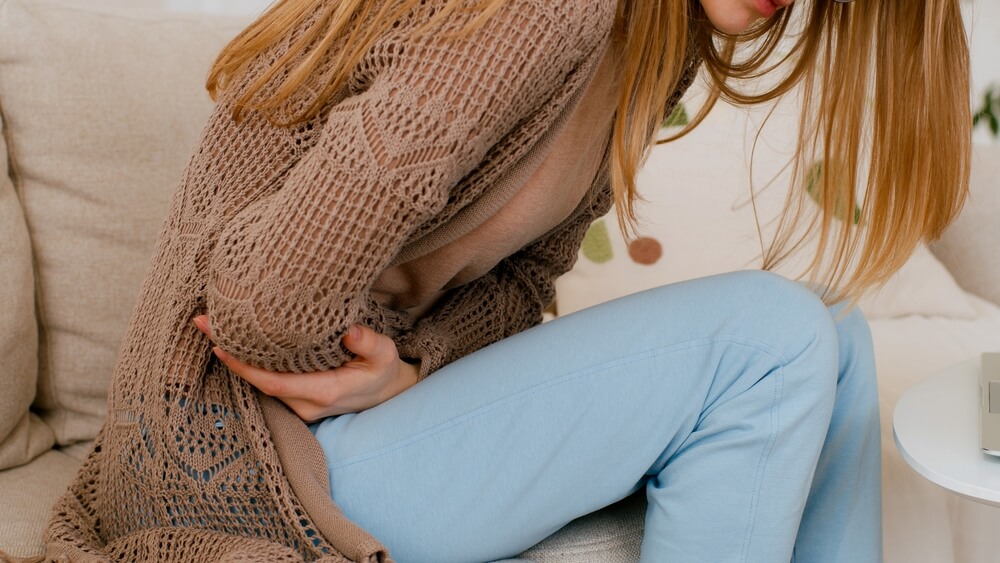Interstitial Cystitis: Unraveling the Mystery of Bladder Pain
Interstitial cystitis (in-tur-STISH-ul sis-TIE-tis) is a chronic and enigmatic condition that wreaks havoc on the lives of those it afflicts. This condition, also known as painful bladder syndrome, is characterized by bladder pressure, bladder pain, and sometimes pelvic pain. The pain can range from mild discomfort to debilitating agony. Interstitial cystitis is a condition that primarily affects the urinary system, specifically the bladder, and can profoundly impact the quality of life. Though there is no definitive cure, various treatment options, including medications and therapies, offer a glimmer of hope to those who suffer from this often misunderstood condition.
In this article, the experts at My OBGYN Specialists talk about the leading causes of the issue, the most common interstitial cystitis symptoms, and effective treatment.
Understanding the Basics of Bladder Pressure and Cystitis

The urinary system is a complex network of organs, including the bladder, kidneys, ureters, and urethra, responsible for storing and excreting urine. In typical circumstances, the bladder expands until it’s complete and then sends signals to the brain through pelvic nerves, prompting the urge to urinate. However, interstitial cystitis disrupts this delicate balance. The condition leads to irritation and inflammation of the bladder walls, causing a muddled signaling system. Consequently, individuals with interstitial cystitis experience a frequent and urgent need to empty their bladder, often with smaller volumes of urine than what’s considered normal.
Interstitial Cystitis Symptoms
The signs and symptoms of interstitial cystitis vary from person to person and can fluctuate over time. These interstitial cystitis symptoms may intensify due to various triggers such as menstruation, prolonged periods of sitting, stress, physical activity, and sexual intercourse. Common interstitial cystitis symptoms include:
- Pelvic Pain: Women may experience pain in the pelvis, or the area between the vagina and anus, while men might feel pain between the anus and scrotum (perineum).
- Chronic Pelvic Pain: A persistent and ongoing sensation of pain in the pelvic region.
- Urgent Need to Urinate: There is a relentless and urgent need to urinate frequently, even during the day and night, sometimes up to 60 times a day.
- Frequent Urination: Frequent urination, often in small amounts.
- Pain or Discomfort: Pain or discomfort in the bladder while filling, which alleviates after urination.
- Pain During Sex: Pain experienced during sexual intercourse.
It’s important to note that the severity of symptoms can vary significantly, with some individuals experiencing periods free from any symptoms.
Interstitial Cystitis Causes
The precise cause of interstitial cystitis remains elusive, and multiple factors may contribute to its development. Individuals with this condition often exhibit defects in the protective lining (epithelium) of the bladder. These defects can allow toxic substances in urine to irritate the bladder walls. Although not proven, other possible contributing factors include an autoimmune reaction, heredity, infection, or allergy.
Risk Factors
Several factors are associated with a higher risk of developing interstitial cystitis:
- Gender: Women are more frequently diagnosed with interstitial cystitis than men. While men can experience symptoms resembling interstitial cystitis, they are often associated with inflammation of the prostate gland (prostatitis).
- Age: Most individuals diagnosed with interstitial cystitis are in their 30s or older.
- Chronic Pain Disorders: Interstitial cystitis may be linked to other chronic pain disorders such as irritable bowel syndrome or fibromyalgia.
Complications
Interstitial cystitis can lead to several complications, including:
- Reduced Bladder Capacity: The condition can result in stiffening of the bladder wall, reducing its capacity to keep urine.
- Reduced Quality of Life: Frequent urination and pain can significantly interfere with daily activities, social interactions, and work.
- Sexual Intimacy Problems: The persistent urge to urinate and pain can strain personal relationships, including sexual intimacy.
- Emotional Distress: The chronic pain and interrupted sleep caused by interstitial cystitis can lead to emotional stress, potentially resulting in depression.
Diagnosing Interstitial Cystitis
Diagnosing interstitial cystitis may involve several steps, including:
- Medical History and Bladder Diary: Your healthcare provider may ask you to describe your symptoms and maintain a bladder diary, recording your fluid intake and urine output.
- Pelvic Exam: A pelvic exam involves thoroughly examining your external genitals, such as the vagina (for women), cervix, and abdomen to assess your internal pelvic organs. The anus and rectum may also be examined.
- Urine Test: A urine sample is analyzed to rule out urinary tract infections.
- Cystoscopy: Your healthcare provider inserts a thin tube with a tiny camera (cystoscope) through the urethra to visualize the lining of your bladder. Liquid may be introduced into the bladder for capacity measurement. This procedure, known as hydrodistention, is performed after numbing you with an anesthetic medication.
- Biopsy: A tissue sample (biopsy) from the bladder and urethra may be removed during cystoscopy under anesthesia for microscopic examination to rule out other causes of bladder pain, including bladder cancer.
- Urine Cytology: A urine sample is collected and examined to help rule out cancer.
- Potassium Sensitivity Test: Two solutions, water and potassium chloride, are instilled into the bladder, one at a time. Patients rate the pain and urgency they feel after each installation on a scale of 0 to 5. The potassium solution may indicate interstitial cystitis if there is significantly more pain or urgency.
Interstitial Cystitis Treatment
While there is no one-size-fits-all treatment for interstitial cystitis, several approaches can help manage its symptoms. These include the following:
Physical Therapy
Collaborating with a physical therapist can address pelvic pain related to muscle tenderness, restrictive connective tissue, or muscle abnormalities in the pelvic floor.
Oral Medications
Certain oral medications may be prescribed to alleviate symptoms, including nonsteroidal anti-inflammatory drugs (NSAIDs) for pain relief, tricyclic antidepressants to relax the bladder and block pain, antihistamines to reduce urinary urgency and frequency, and pentosan polysulfate sodium (Elmiron) to restore the bladder’s inner surface.
Nerve Stimulation
Nerve stimulation techniques like transcutaneous electrical nerve stimulation (TENS) or sacral nerve stimulation may help manage symptoms.
Bladder Distention
Some individuals may experience temporary symptom relief following cystoscopy with bladder distention, a procedure involving stretching the bladder with water.
Bladder Instillation
Medications, such as dimethyl sulfoxide (DMSO), can be instilled into the bladder through a catheter to alleviate symptoms. Solutions containing lidocaine, sodium bicarbonate, pentosan, or heparin may also be used.
Surgery
While surgery is rarely employed to treat interstitial cystitis, it may be considered in severe cases where other treatments have failed. Surgical options include fulguration and resection, where ulcers in the bladder are treated, and bladder augmentation, which increases bladder capacity.
Self-Care
Many people with interstitial cystitis find symptom relief through self-care strategies, including dietary changes to avoid bladder irritants, bladder training to regulate urination, wearing loose clothing, stress reduction techniques, smoking cessation, and gentle stretching exercises.
Alternative Medicine
Complementary and alternative therapies like guided imagery and acupuncture show promise in treating interstitial cystitis, although more research is needed to establish their efficacy.
Coping and Support

Interstitial cystitis can profoundly impact an individual’s quality of life. Finding a supportive healthcare provider who focuses on improving your condition and overall well-being. Support groups can also provide valuable information and emotional support.
Conclusion
Interstitial cystitis is a complex and often perplexing condition characterized by bladder pain, urgency, and frequency. While there is no definitive cure, various treatment options, and self-care strategies offer hope to those living with this chronic condition. With ongoing research, healthcare providers can continue to develop effective treatments to help alleviate the burden of interstitial cystitis on the lives of those it affects.
If you want to learn more about the condition, consider scheduling an appointment with us today.


